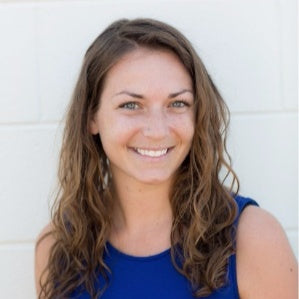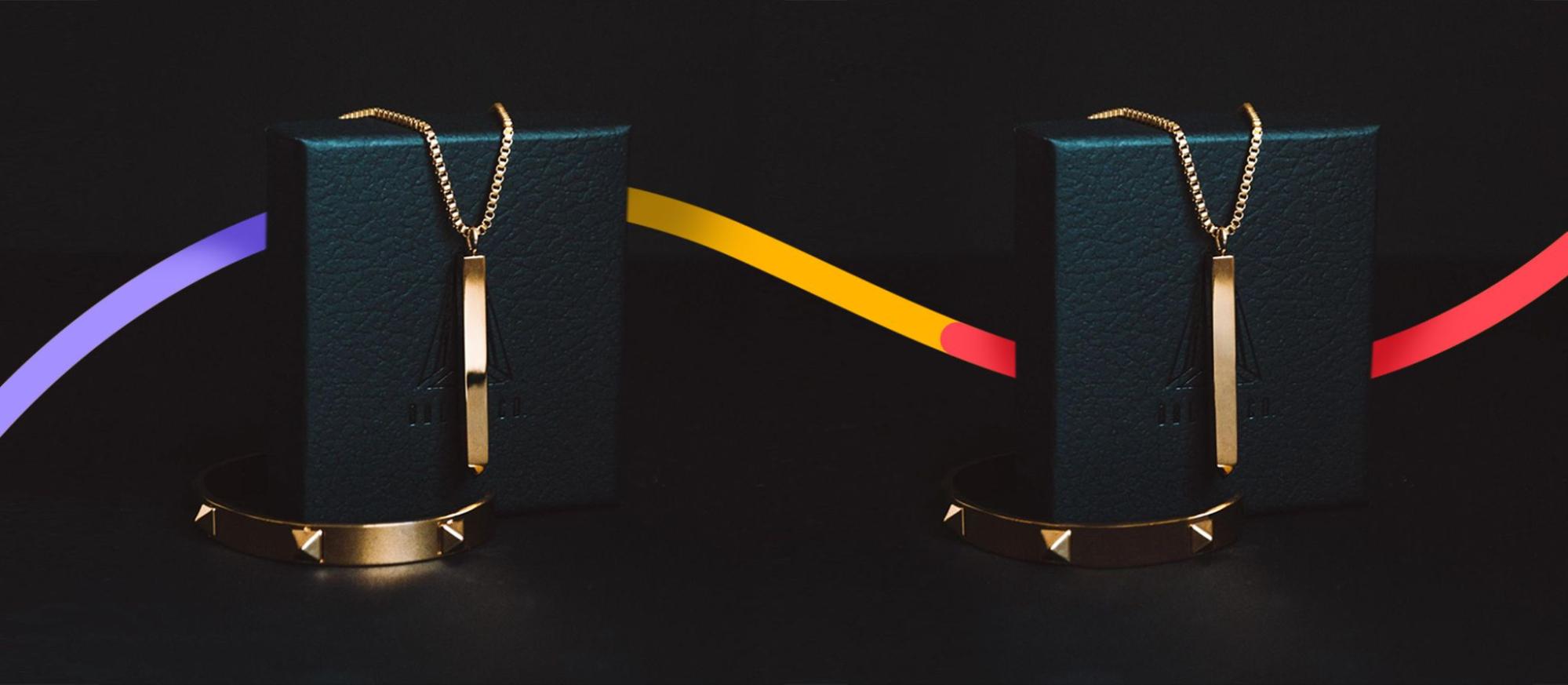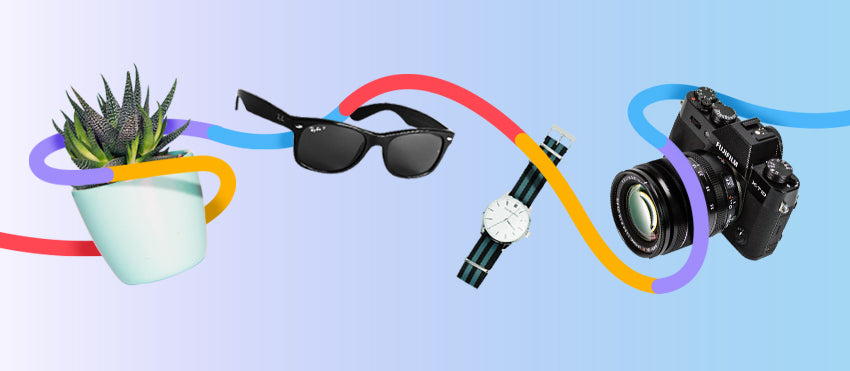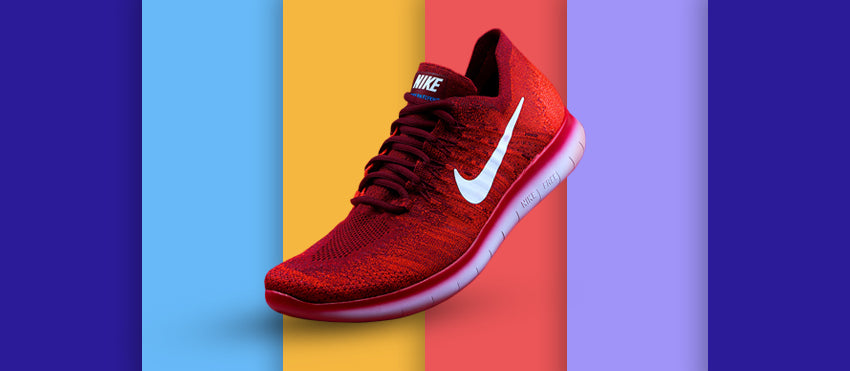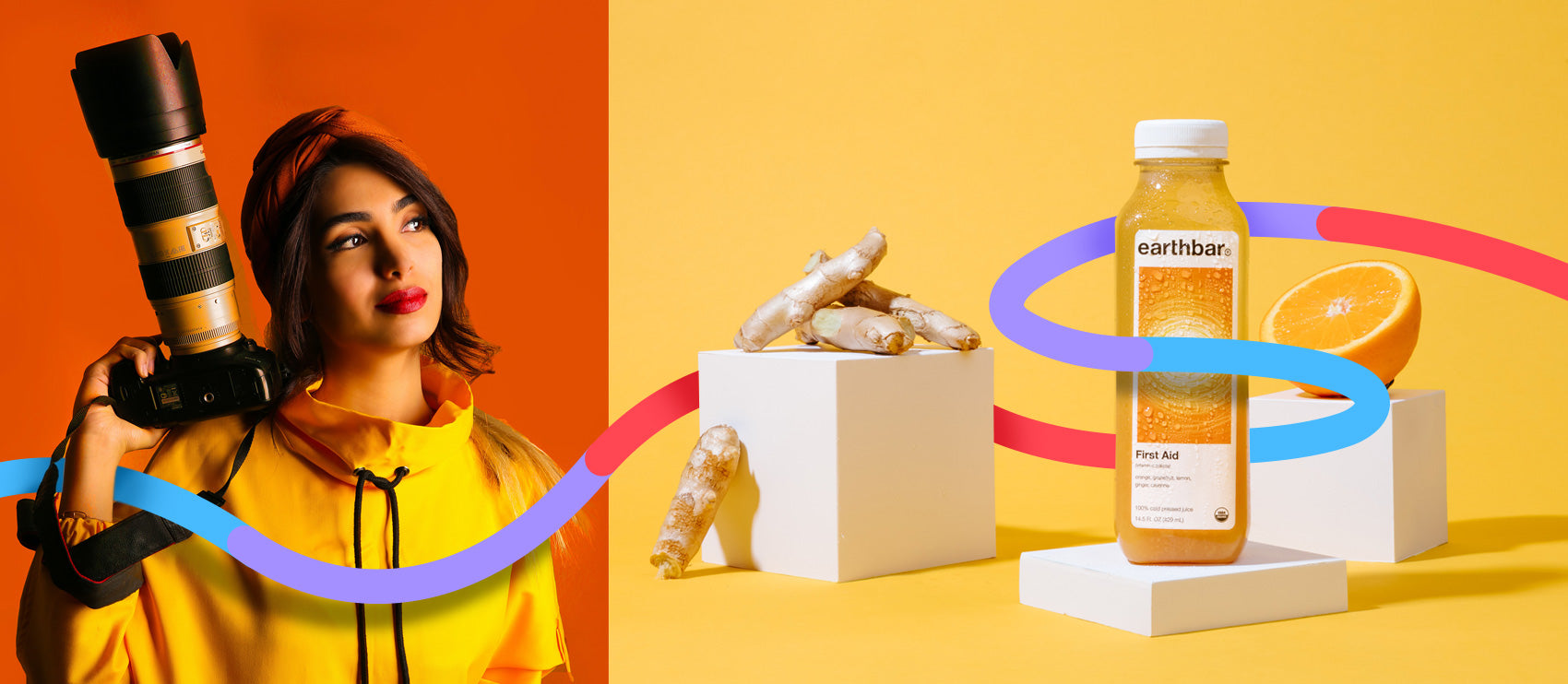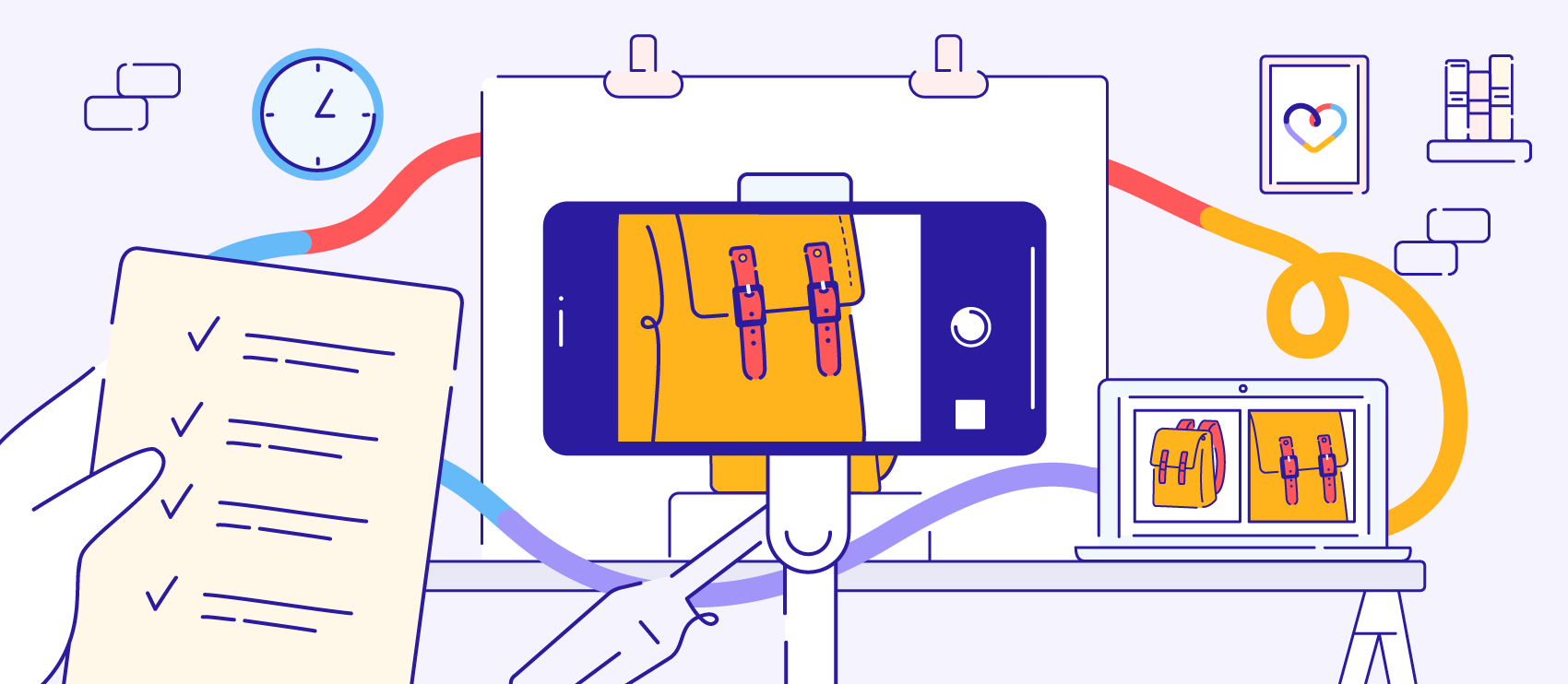Britni Wood hasn’t always worked on high-end, weeks-long photoshoots for Martha Stewart. She’s been on the DIY side of product photography too. When she co-owned an online retail store, she and her business partner styled, shot, and edited every single one of the 400+ product photos themselves.
Receive free ecommerce & product photography tips
Britni sat down with us (in a virtual room) to talk about her experience as a commercial stylist, and give her best tips for pandemic-era product photography.
Finding her passion for styling
When Britni was sought out by the Martha Stewart team for a story, she had a chance to get her hands dirty. “That work involved everything from, story creation to color palettes, crafting all of the market research, getting [the materials] in. And then doing all of the styling on-set, working with the in-house photographers. The whole thing.”

After her one-off project with the team, Britni was offered a job as style editor for Martha Stewart Weddings Magazine. This helped Britni start to build her well-rounded foundation for product photography. “On one hand, I have the whole understanding of photography from a styling perspective, and I’ve also been a freelance stylist for quite a long time.”
Britni notes this could be a blessing in disguise, as she holds herself to a high standard. “There’s a real element of care that comes with being a stylist. You have to care enough to make things beautiful and to be helpful to someone and to highlight lovely things. There's something about being a stylist that is kind of like giving a very tender part of yourself.” “If you're able to take things and make them beautiful for someone to enjoy, that's a real joy for me too. Styling, in a way, is a form of self-care.” Britni also loves that she’s been able to help a lot of brands, markers, and artisans. Britni didn’t stay with Martha Stewart forever. After a quick stint with an Urban Outfitters brand, she started her own brand, The Loveliest. Essentially, they imported linens from high-quality linen purveyors all over the world and then offered custom embroidery on those linens. Britni and her family joined forces on the business venture, piecing together their backgrounds and skills to build it from the ground up. “We made our own website, photographed everything ourselves. My fiance has a little bit of photography background, and then with my styling, I knew we could do it without hiring out.” Together, they built a thriving brand that evolved to meet their customers’ needs. It was a lot of fun but also a lot of work for Britni and her business collaborators/family. Editing their photos started to become tedious. “We used Lightroom and it worked for maybe a year. I’m such a perfectionist in terms of getting every single product looking absolutely perfect with just the right amount of shadow and just the right background and just this whole rigmarole of trying to figure that out.” “We wanted to photograph in a way that we hadn’t really seen linens photographed before. It’s not always easy to make something that’s very flat look interesting. We had a lot of trouble with that. We worked endlessly to get all of the right presets and make [the photos] look the best. I hand retouched all the backgrounds out of every single thing, so it took it a lot of time.” Over time, the business became too much for Britni to help run and act as the creative director. She was flying back and forth between LA and New York, and she had other dreams to pursue. Plus, her sister Kelsey welcomed two babies into her own family during that time. So the business evolved yet again, this time to meet both the needs of their customers and themselves. Kelsey ended up turning The Loveliest into The Loveliest Home, an interior design company. For Britni, photo styling work since the start of the COVID-19 pandemic has been hot or cold. “It’s been very spotty. But thankfully I work with a couple of photographers who I'm close with. So we’ve gotten a couple of jobs. It’s easy for us to just work together. We don’t have to do it with a big set, you know.” Britni has had so much diverse experience styling product photography, she’s learned more than a few tricks along the way. When you’re doing everything yourself, preparation and styling make a big difference. The more you can do while on set and during the shoot, the less you have to rely on post-processing and photo editing. “You can do a lot with Photoshop, but it's a lot easier if you don't have to,” says Britni. “You can do a lot with Photoshop, but it's a lot easier if you don't have to.” – Britni Wood, photo stylist She points out that wrinkles, puckers, and extra threads stick out on camera more than in real life. “It’s really important to know that things on camera translate so much more intensely. Make sure what you’re photographing is in its best possible form.” Pay attention to glare, and make sure you’re thinking about the proportions of your image. If you know you need a square photo, you can use masking tape to mark the edges of the image. “You know when you’re placing everything that it looks right. I think people think that there’s too much to try and fit into a photograph. But it’s really quite easy if you just think about a photograph as a square and you need to make that square look pretty.” Britni talks about evoking emotion with the photos she works on. “Every single thing is going to cause a different emotion for someone who’s looking at the photo on your website. It’s either going to look very formulaic, or it’s going to look more lifestyle and they can envision it actually on their table or on their arm or whatever it is. It totally depends on how you shoot something, if it relates to how it will be used, or how someone will possibly be able to envision it in their life. It’s about making something very attainable.” Depending on where you’re shooting, there are things you can do to customize the space to have a successful shoot. When Britni styled for Martha Stewart, most shots were held in a studio near their New York City offices. “We would shoot and produce the magazines in a cyclical way. We usually had about two weeks to prep and a week to really get everything squared away for shooting for each story. It was so involved to the extent that I designed every single set that we did. I worked closely with the construction team on every single thing.” Britni and her colleagues took advantage of the large spaces, allocating different areas for different types of photos. “We’d have a stills area, a table setting, portrait — areas around the studio that we would set up and have different lighting and get ready for the power to pop around and shoot as quickly as possible.” Martha and her art director(s) finalized all photos, so Britni didn’t have much input into the post-processing part of prepping the shots. “There wasn’t a lot of taking backgrounds out and stuff like that — that’s definitely more so along the lines of retail. You want a super clean shot of what you’re trying to sell.” These types of edits are more straightforward — not to mention creatively draining — so it could be a good idea to explore outsourcing your basic photo edits if you need them to sell online.
Britni and her family didn’t outsource any of the work for The Loveliest, and it cost them a lot of time. “I hand retouched all the backgrounds out of every single thing, so it took it a lot of time. So that’s why I can appreciate a service like [Path]. We didn’t even have that many products. We had about 400 products. But I’m sure there are companies that are out of control with how much they sell. And that would just be such a hindrance to have to do all that.”
When it comes to taking product photos during the pandemic, a lot of people are teaching themselves to do things like prop styling so they can have fewer people on set. “It’s a lot of people teaching themselves how to do everything because, for one, I don’t think people have a lot of cash on hand,” Britni says. “A lot of photographers don’t like to work outside their own studios, and I think people will start making their own studios, if they haven’t already.” She notes that things like YouTube and Instagram have given people ways to both learn and express creative skills like product photography. “You could very well see things being shot more at home or by real-life people, not necessarily professionals.” Beyond a high-quality camera and lens for product photography, you’ll need some equipment to pull off your shoots. If you’re DIY-ing your prop styling, Britni recommends some basic tools: Even just a basic kit with these items gets the creativity flowing. No matter the situation COVID put you in, you can develop your skills to create amazing product shots. “If you can get a really lovely shot with the right lighting, then what you’re doing is a tremendous asset, because that’s a true skillset,” Britni says. If you’re ready to start taking shots of your own, check out these articles next:
“Making something prettier than anyone thought it could be is such a thing of joy.” – Britni Wood, photo stylist
Selling her own products online



Britni’s tips for styling product photos — even if you’re not a pro
Get your shot right on camera


Set up your space
Enlist professional photo editors when it makes sense
“You can do a lot with Photoshop, but it’s a lot easier if you don’t have to.” –Britni Wood, photo stylist
DIY your shots during the pandemic

Style your shots


